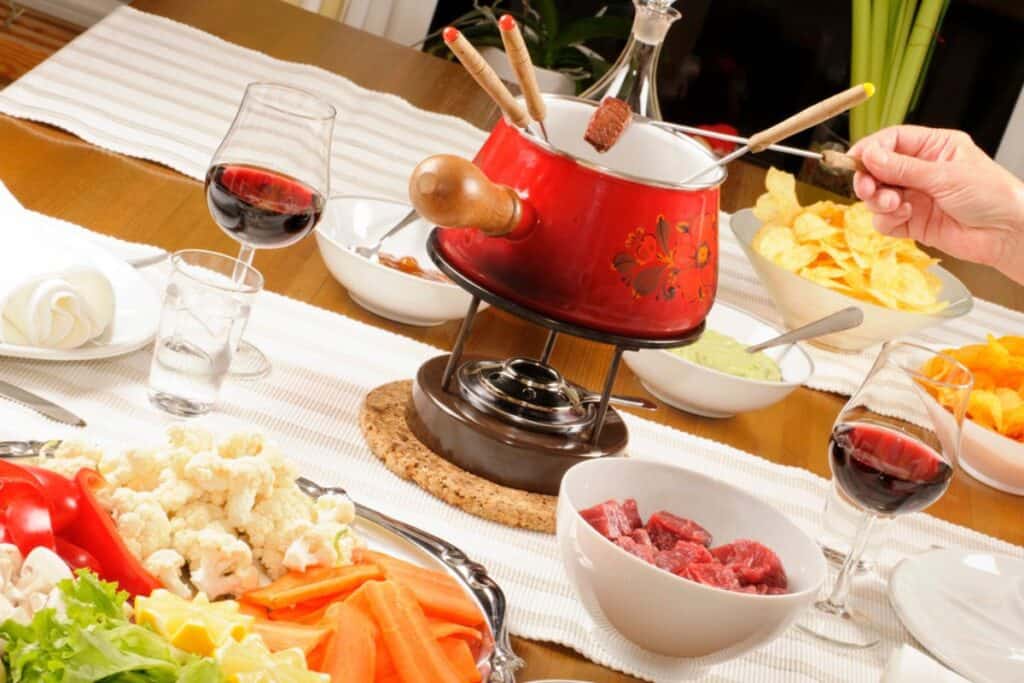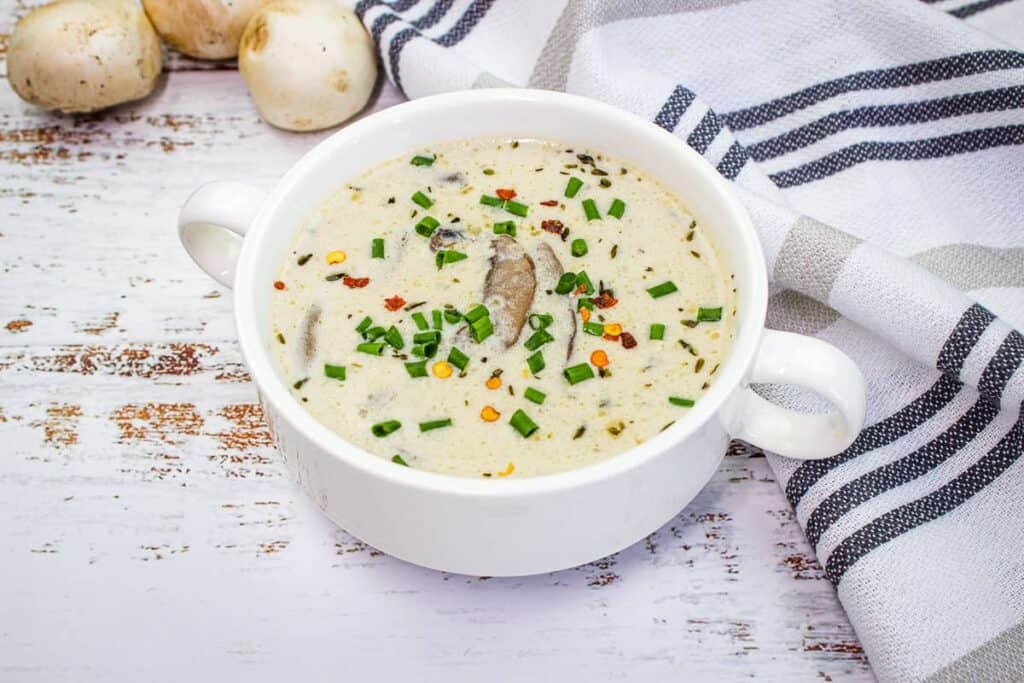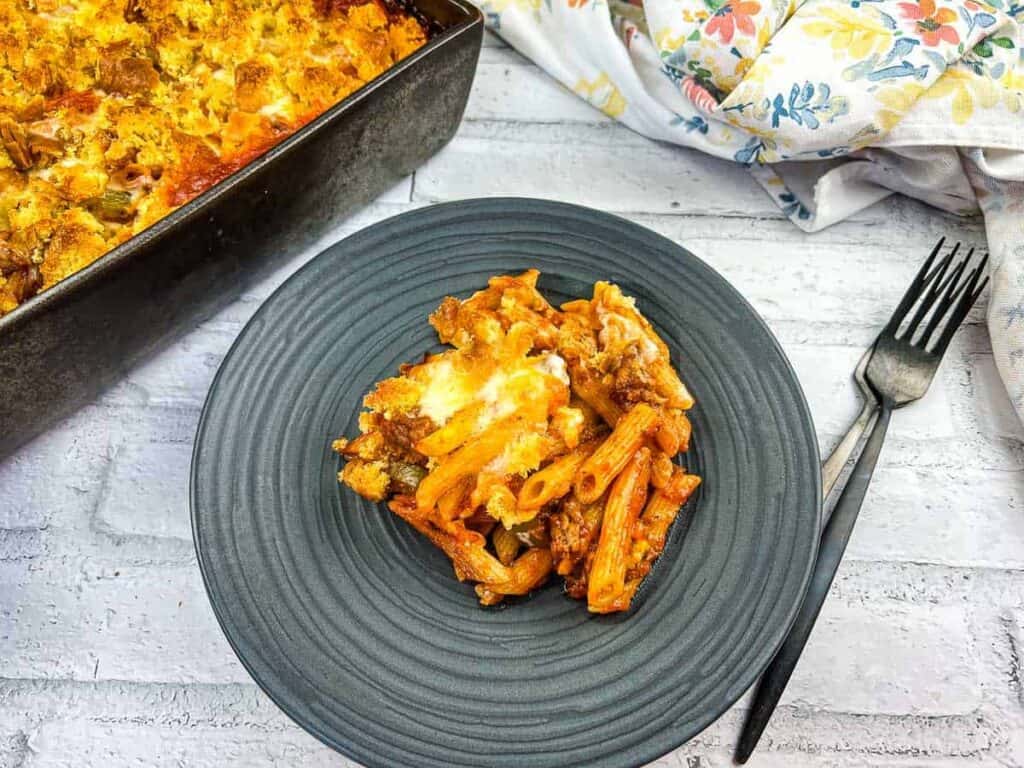The 1970s were a time of transition and experimentation in American kitchens. Families were busy, and life was moving faster, which started to show in how people cooked. Here are some of the meals and cooking techniques that shaped family dinners during the 1970s.

Comfort and Convenience
If you were growing up in the ’70s, your family dinners probably included some comforting classics. The focus was on hearty, satisfying meals that were easy to prepare, which was a perfect fit for the busy lives of many households. Think casseroles — those all-in-one dishes that could be thrown together and left to bake while you went about other tasks. Tuna noodle casserole was a staple, with its creamy, cheesy sauce and chunks of tuna melding with noodles. It was affordable, filling, and could be customized with whatever ingredients you had on hand.
Another favorite was meatloaf. This dish, made from ground beef mixed with breadcrumbs, eggs, and seasoning, was a staple in many households. It was a great way to feed a family on a budget, and leftovers could be used for sandwiches the next day. The 1970s meatloaf often came with a ketchup or brown sugar glaze on top, adding a bit of sweetness to balance the savory flavors.
The Rise of Convenience Foods
This era saw the rise of convenience foods, which started to play a more significant role in home kitchens. Frozen dinners were becoming popular, offering families a quick solution for busy nights. Brands like TV Dinner and Stouffer’s made their debut, promising a hot meal with minimal effort. While these may not have been gourmet, they fit the bill for many families looking to save time.
The popularity of canned soups also exploded. Campbell’s Soup was a go-to ingredient in many recipes, and it wasn’t uncommon to find it as the base of a casserole or as a quick and easy meal on its own. Cream of mushroom soup, in particular, became a kitchen staple for its versatility and convenience.

New Technologies and Cooking Trends
The 1970s were also a time of innovation in kitchen technology. The microwave oven was becoming more affordable and popular. It was a game-changer, allowing families to heat up meals in minutes instead of hours. This new gadget wasn’t just for reheating leftovers; it started to change how people approached cooking. Microwave recipes began to appear, encouraging cooks to experiment with this new method.
Electric can openers also began to appear in kitchens. This simple device made opening cans easier, especially for busy cooks who appreciated the convenience. While it might seem trivial now, it was a small but significant change that made meal prep a bit less demanding.
Meal Planning and Preparation
With the focus on convenience, meal planning became crucial for many families. Weekly menus were often planned out in advance to ensure that meals were balanced and varied. Sunday dinners were a special occasion, with families often gathering around the table for a more elaborate meal. Roasts — whether it was a pot roast, a turkey, or a ham — were common dishes, often accompanied by a medley of vegetables and mashed potatoes. This was a time for the family to come together, share stories, and enjoy a meal that took a bit more time to prepare.
Family-Friendly Recipes

The 1970s were also a time of experimentation with new and exotic ingredients. As more families traveled and explored new tastes, some of these influences began to find their way into home kitchens. Recipes that included ingredients like sour cream, taco seasoning, and various types of cheese became more common. Tex-Mex was starting to gain popularity, and dishes like nachos and taco salad began appearing on more dinner tables.
In addition to these new flavors, the decade also embraced simple, no-fuss recipes that could please a crowd. One such dish was the popular Sloppy Joe. Made from ground beef cooked with a tangy tomato-based sauce and served on hamburger buns, it was a messy but satisfying meal that kids and adults alike enjoyed.
Baking and Desserts
When it came to desserts, the 1970s were a sweet time. Jell-O desserts were a big hit, with their bright colors and fun, wobbly textures. Jell-O salads, often incorporating fruit or marshmallows, were a favorite at potlucks and family gatherings. Bundt cakes also gained popularity during this time, thanks in part to their impressive presentation and the ease with which they could be baked and served.
Another baking trend was the use of boxed cake mixes. Betty Crocker and Duncan Hines made baking cakes more accessible for home cooks, reducing the time and effort needed to prepare a dessert from scratch. This meant that families could enjoy homemade cakes with less hassle, which was a win for busy parents.
Entertaining
This is the decade of the fondue. Now enjoying a resurgence in popularity, fondue was the way for friends and family to gather around the table. Fondue pots and kits were flying off the shelves, and many bottles of wine were consumed around a fondue table.
A New Attitude Towards Food
The 1970s also brought increased awareness of nutrition and health. This decade marked the beginning of a more health-conscious approach to eating, influenced by the rise of dietary guidelines and the first major wave of interest in whole foods and natural ingredients. While the traditional comfort foods still held strong, there was a growing interest in lighter and more nutritious options.
Final Words
Thinking back to family dinners in the 1970s, I’m flooded with nostalgia for simpler times. Those evenings felt cozy and comforting, filled with the smells of home cooking. Whether it was a hearty casserole bubbling in the oven, a quick and easy frozen dinner, or the mouthwatering aroma of a Sunday roast, those meals were more than just food. They were a snapshot of life back then, a taste of what it meant to be an American family.